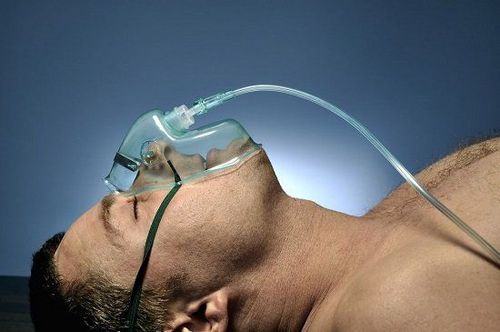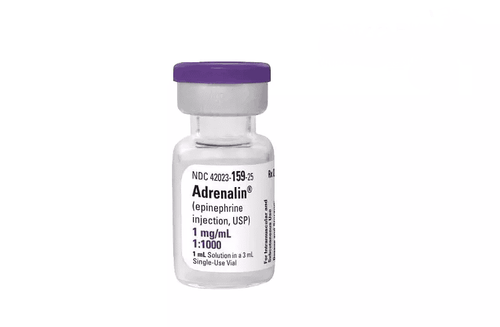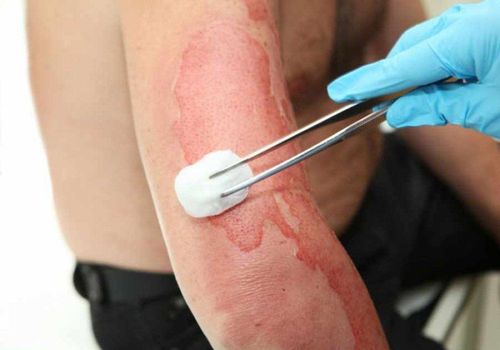This is an automatically translated article.
Posted by Specialist Doctor II Phan Phi Tuan - General Surgery Department - Vinmec Phu Quoc International Hospital
Progression of infection, burn toxicity depends on many factors such as area, depth of burn, patient's health, co-morbidities .... causing diverse clinical manifestations.
1. Outline of bacterial infection, burn poisoning
Bacterial infection, burn poisoning (there is also a view that it is the second stage after burn shock) is the biggest and most lasting characteristic of burn disease, also the cause of many difficulties, complications and death most of burns.
Pathogenesis of burn poisoning infection:
1.1 Toxic absorption
The body absorbs into the blood and lymphatic vessels the products of degradation and disintegration of burn necrosis tissues such as: Histamine, LPC substance , skin proteinase, protein-destroying enzyme released from protoplasm and destroyed cell mitochondria (catepsin, phosphatase....) pus, inflammatory fluid, bacterial endotoxin. These factors often cause burn toxicity.
1.2 Local injury
Burns, especially deep burns, are a favorable environment for bacteria to grow. These burns are poorly nourished after burns, preventing antibiotics and immune factors of the body from reaching the burn area, creating more conditions for bacteria to grow locally, causing sepsis, septic shock, and multiple muscle failure. and possibly death.
1.3 Immunodeficiency
2. Clinical manifestations of burn poisoning infection
Progression of burn poisoning infection depends on many factors such as area, depth of burn, patient's health, co-morbidities ....causing diverse clinical manifestations.
2.1 Systemic manifestations Fever: The earliest and most frequent symptom, the temperature can range from 38 degrees Celsius to 40 degrees Celsius, there is no cycle, only related to effects such as dressing changes, surgery. In deep burns, after necrosis and granulation tissue growth, the temperature can be reduced by about 1°C - 3°C and return to normal when the burn is covered and epithelialized. Accompanied by fever is a general infection such as dry lips, dirty tongue, infected face. In some severe cases, there may be a persistent high fever, which is not controlled by conventional medicines. When infection with gram (-) bacteria can cause hypothermia, these are severe cases, possibly fatal. If after burn necrosis has fallen off but still has a high fever, you should pay attention to deep organ infections such as pyelonephritis, pneumonia .....
Neuropsychiatric disorders: This manifestation depends on the area and depth of burn, closely related to systemic inflammation and infection. Clinical manifestations with hallucinations, delirium, paranoia or lethargy, nervous breakdown. Patients often lose sleep, headache when fever is high. The duration of these disorders is usually 2-3 days, sometimes 3-4 weeks.
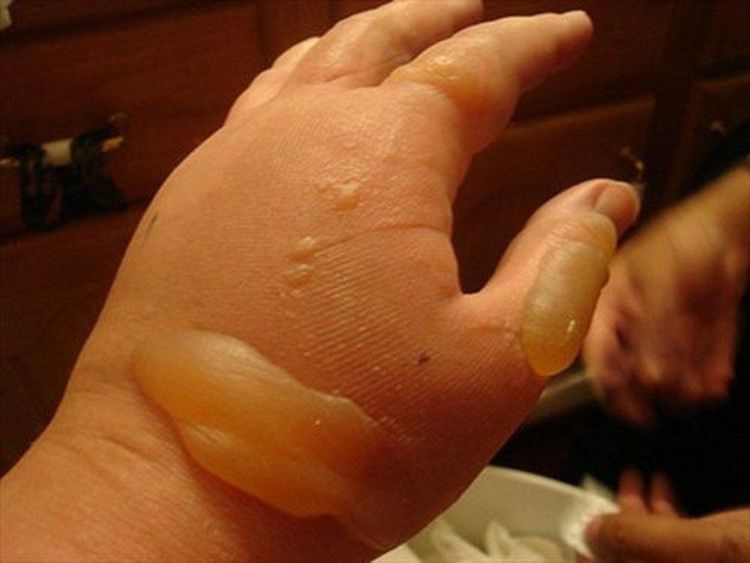
Edema, congestion and changes in body mass: Edema is often detected immediately after burn shock, in the burn area and in the non-burnt area. This phenomenon is usually caused by extravasation, due to inflammation. When the patient is severely debilitated, there is nutritional edema. Sometimes, this edema is caused by too much fluid. Along with edema is a weight gain that can be ≥ 10% in the early stages, when the edema is reduced, most of the patient's weight also decreases accordingly. Congestion of the healed skin around the burn can spread to surrounding tissue due to inflammation or infection. In addition, there may be pathological changes to capillary wall, manifested by subcutaneous hemorrhage, injection site bleeding, fragile veins....
2.2 Manifestations of circulatory system In cases of minor burns, disease The patient had a rapid pulse but normal blood pressure. In severe burns, persistent low blood pressure may be present. When there is septic shock, the patient will have the following symptoms: Low blood pressure, pulse collapse, pale skin, oliguria....depending on the case.
2.3 Respiratory system manifestations If there are no respiratory burns and no complications, there are no signs of the respiratory organs. When burns to the face, chest, and back, there is often hypoventilation.
Complications on the respiratory organs can be encountered: Pneumonia, empyema, lung abscess, acute pulmonary edema, acute respiratory distress syndrome (ARDS). When sepsis caused by gram (-) bacteria, not in shock, usually present with hyperventilation and respiratory alkalosis.
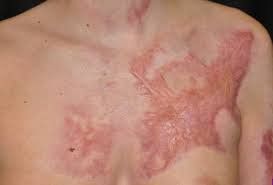
2.4 Gastrointestinal manifestations Common manifestations are anorexia, slow digestion, vomiting, belching, abdominal distension, epigastric pain. Children show signs of poor suckling, giving up suckling. Sometimes there is diarrhea or constipation. In addition, possible complications are gastrointestinal ulcers, acute toxic hepatitis, acute cholecystitis.... about 3% of patients have gastrointestinal bleeding at 2-3 weeks after the burn with varying degrees of severity. difference.
2.5 Urinary system manifestations Urine output: Polyuria may occur with urine output up to 6 liters/day in adults and 2-3 liters/day in children. This condition usually occurs from day 5 after the burn and lasts about 1-2 weeks. Patients with these manifestations often have a better prognosis than those with oliguria.
Oliguria, severe and prolonged anuria are manifestations of patients with acute renal failure, usually in patients with burns of great depth or high voltage electrical burns, sepsis or septic shock caused by gram-negative bacteria. -). These patients often have a worse prognosis than those with polyuria.
Urine color: Light yellow in fever, dark in oliguria and gradually clear in polyuria. In the urine can be found albumin, red blood cells and Hb.
3. Subclinical manifestations of infection, burn poisoning
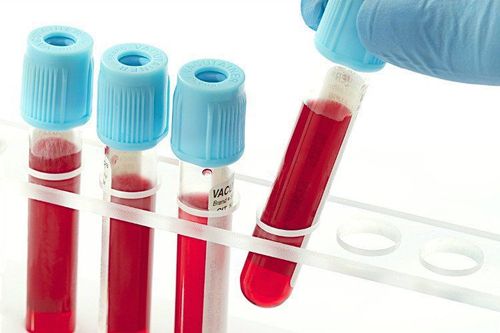
Blood test: Usually leukocytosis, can be up to 20 -30 G/l, white blood cell formula turns left. Severe cases, especially in children, may have leukopenia. Anemia of varying degrees.
Immune - enzyme - endocrine disorders: Gamma globulin decreased, lymphocyte decreased, CRP increased, liver enzymes increased.
Metabolic disorders: Catabolism predominates, basal metabolism may be doubled. This disorder usually follows the period of burn shock, peaking on 7-10 days after the burn, gradually decreasing with the degree of closure of the burn. Protein and albumin decrease until the burn heals.
Blood coagulation, electrolyte and acid-base disorders:
Coagulation: Possible thrombocytopenia, disseminated intravascular coagulation (DIC). Electrolytes: Unspecified disturbances according to urinary excretion and drugs used. Acid-base: When patients with sepsis caused by gram (-) bacteria may experience respiratory alkalosis. When patients are in shock, metabolic acidosis is common. Burn patients need to be given first aid properly and promptly, in case of severe burns, after performing first aid, it is necessary to transfer the patient to a reputable hospital immediately to prevent infection and poisoning of burns. With a team of highly qualified and experienced doctors, fully equipped with modern facilities and equipment, Vinmec International General Hospital has successfully received and treated many severe burns cases. by identifying the disease and staging the most effective pre-treatment. Especially when coming to Vinmec International General Hospital, patients do not need to wait long, have a quick examination time and are carefully guided by experienced medical staff on the use of medicines, helping Patients can easily comply with their burn management.
Please dial HOTLINE for more information or register for an appointment HERE. Download MyVinmec app to make appointments faster and to manage your bookings easily.





